When I think about SIGMA lenses, what immediately comes to mind are the famed Art line or the robust high-speed Cine primes. If I’m trying to switch up the look of a particular vintage scripted, recreation, fashion, or musical piece I’m shooting, I may turn to the nifty SIGMA Cine Classics (you haven’t seen a flare until you’ve used these).
Then there’s SIGMA’s Contemporary mirrorless lenses, which offers two options: the retro-feeling (at least in build) I series with all-metal construction, full-frame coverage, and manual aperture ring, and second, a series of lighter APS-C lenses with electronic aperture control and modern exterior design. They all fit under the affordably-priced “Contemporary” banner aimed at photographers and video creators alike. After some initial skepticism, I’m seeing great results from Contemporary primes on my projects, and other DoPs are taking note as well.

I recently spoke with Pete Rowe, a UK-based Director of Photography, about his affinity for the Contemporary line in conjunction with the DJI Ronin 4D camera platform and how he used the I series primes on a BBC series called Dodgers and the Channel 5 show Finders Keepers.
Interview with Pete Rowe, Director of Photography
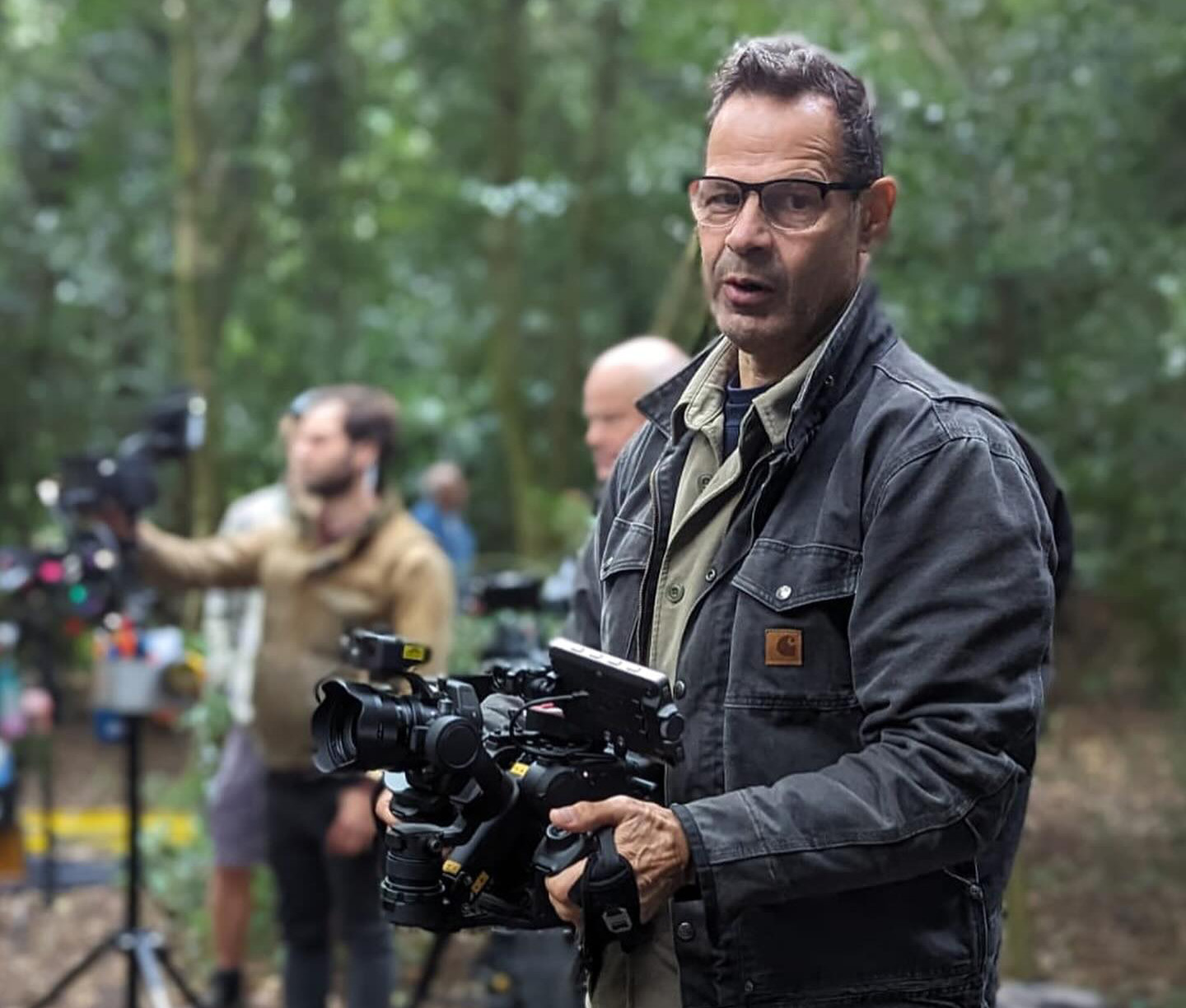
Graham: What was your journey like to the Director of Photography role? Were you always interested in cinematography?
Pete: I have been working as a Director of Photography for around the last 25 years, and prior to that, I was a documentary cameraman, shooting shows all over the world. My work is mostly comedy-drama shows for the main TV broadcasters in the United Kingdom, with some crime drama and the odd feature film thrown in.
Graham: Do you tend to operate on your projects? If so, what draws you to that role?
Camera choice
Pete: Having come from a documentary background, I generally like to operate camera myself. I also like to be able to work quickly, and the DJI Ronin 4D is ideal for this.
Graham: Speaking of the DJI Ronin 4D – what drew you to that camera initially?
Pete: Having run a Ronin 2 for several years, when I first tried out the 4D, I found it so quick and easy to use that I almost immediately ordered one. Initially, I purchased the DJI Dl lenses, and whilst they worked ok, I found they had some big limitations: the close focus was not great, and the 2.8 stop not ideal.

Working with SIGMA Contemporary lenses
Graham: Why did you decide to work with the SIGMA Contemporary line with the DJI Ronin 4D?
Pete: I looked at other sets of lenses, and having tried out a set of SIGMA Contemporary lenses at a rental house, I decided they were the ones for me. I didn’t want to go down a manual lens route, and the interface with the Ronin is as seamless as with DJI lenses.
I couldn’t have been happier with how they perform. The look is great with a truer image than with the DJI lenses and also with a very pleasing bokeh. I am generally shooting full frame at around T2, and so the drop-off is quite pronounced but, again, very pleasing.
Graham: What has your history been like with SIGMA?
Pete: My first show with the SIGMA Contemporary line was Finders Keepers, a crime drama for Channel 5. Whilst the A Camera was an Alexa Mini with Canon Sumire primes, we increasingly found ourselves using the Ronin not just for our walk-and-talks but for all our in-car scenes and as a quick and easy high shot. The show’s story revolved around a hoard of Saxon treasure found in a remote area of forest and had many scenes set in woodland. The ability to throw the camera on lighting stand and wind up into the tree canopy so we could look down at our actors gave us shots that would have been very slow to get in any other way.

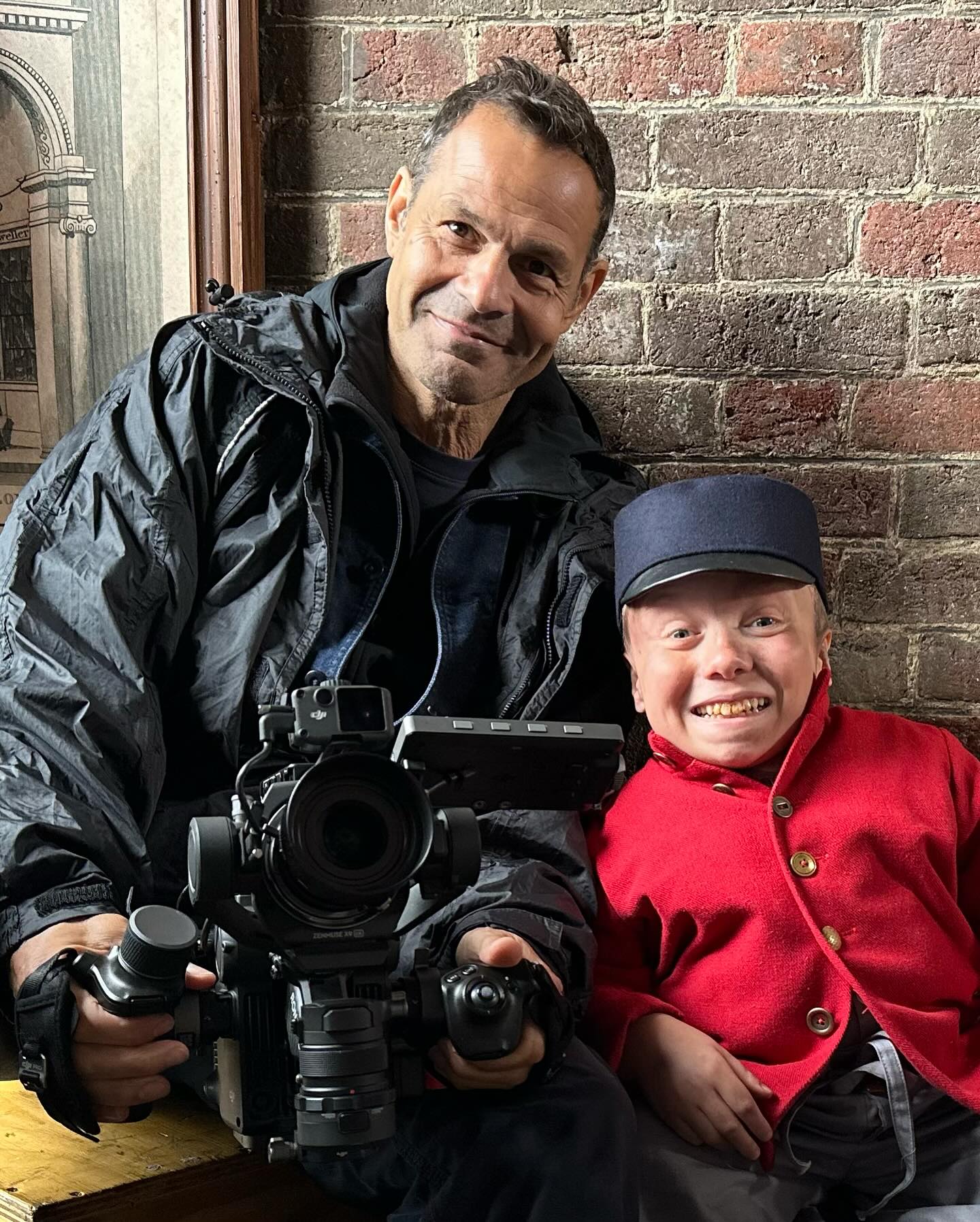
Graham: Were you able to match those various lenses together in post?
Pete: With a little tweak in the grade, I found the SIGMA and the Ronin cut perfect with the ARRI and Canon setup.
From Finders Keepers, I moved on to a procedural police show for the BBC, which was set in rural Devon. The first episode of Beyond Paradise had a Murder-on-the-Orient-Express theme with a killing on a vintage steam train. From the first days of prep, I sold production using the DJI Ronin 4D and the SIGMA Contemporary primes, as the space of the train was so limited that was the only way to get the required shots. Things in the engine compartment were particularly tricky, and the stripped-down version of the Ronin using the flex system was a must. With only the light from the steam train’s firebox and a small amount of fill light from a Rosco DASH fixture to illuminate the driver and engineer, the SIGMAs coped well.
The A camera was an Alexa Mini, but this time with Cooke S4s, and again, the two systems cut perfectly.
Pete’s latest project shot with SIGMA, Dodger
Graham: Does that bring us to Dodger? Having admired the trailer, I thought I would reach out, given our shared love of this camera platform.
Pete: Dodger is the origin story of the Artful Dodger from Dicken’s Oliver and follows Jack Dawkins as he comes to London as a young orphan and falls into a life of crime with Fagin and his gang of young thieves.
In the past, we made a series of ten adventures followed by three special episodes. Dodger was a stand-alone episode. In this period comedy-drama for the BBC, I decided for the first time I would use the Ronin 4D and SIGMA Contemporary primes as the A-cam for a whole show.
This story centered around the coronation of Queen Victoria and Dodger’s attempts to steal the Crown Jewels. It’s a very fast-paced show with lots of movement, chases, and shootouts.
Once again, the camera and lens combo gave great results, and the ability to shoot so fast was a huge advantage with the schedule we had. I paired the A camera with a Sony FX9 and used the Canon Sumires for B camera, and again, the cut was seamless.

Why I shoot with SIGMA Contemporary lenses
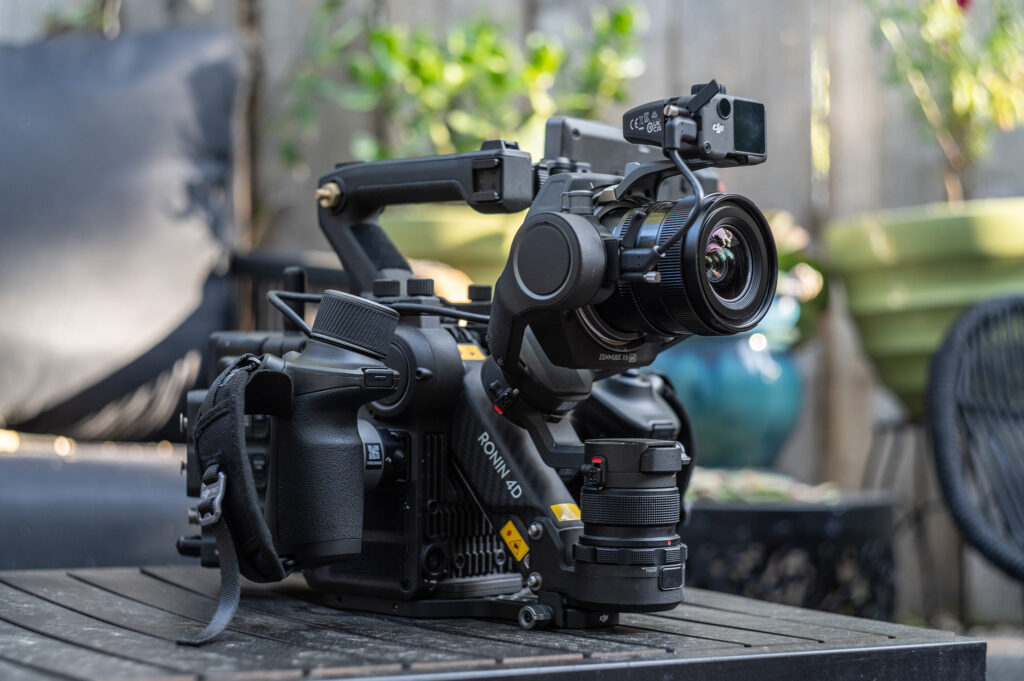
Pete Rowe describes many of the same aspects of this combo that drew me to include the Ronin 4D and SIGMA Contemporary primes more and more in my work.
My own journey with the Contemporary line began while filming on the Big Island in Hawaii for Nickelodeon on Nick News S3. It extended to a kids’ science show for KiwiCo, which filmed in Los Angeles in the latter part of 2023.
As a cinematographer working in television, digital, and film, I pick optics in a variety of ways and for different reasons – usually based on enhancing a storytelling point or, because optics match a particular decade, or perhaps because they evoke a particular feeling in a given scene. I look at the sharpness, color cast, quality of fall-off/bokeh, flare character, and close focus abilities first, and then I double-check that they can hold up to the needs of a fast-moving production from a build perspective.
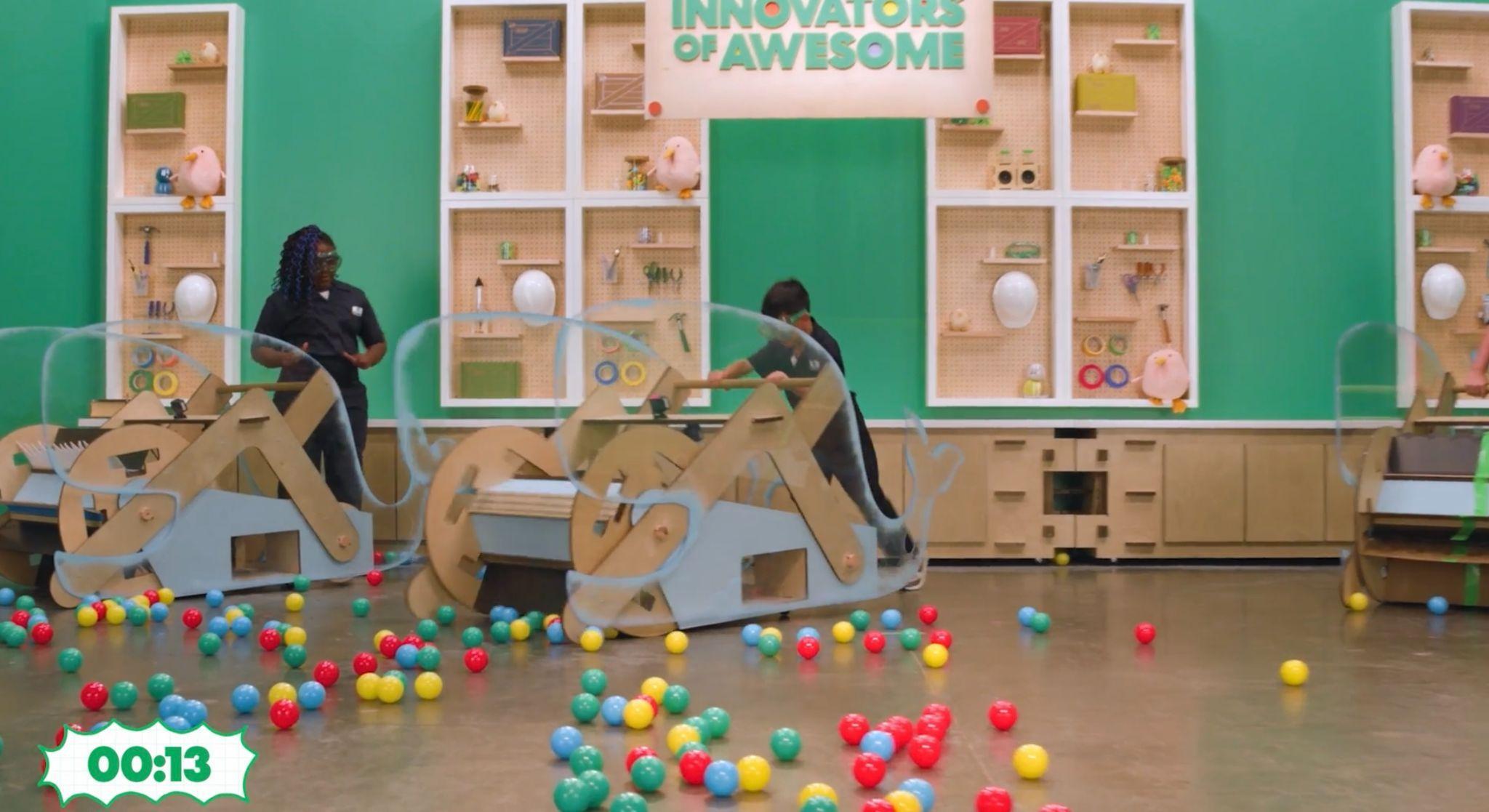
Rarely, if ever, do I look at weight (different story if I’m using a gigantic cine zoom), but the point is I devote little time to the question of weight or size because we’re used to lugging cameras around and mounting them in tricky spots. What’s a few pounds here or there?
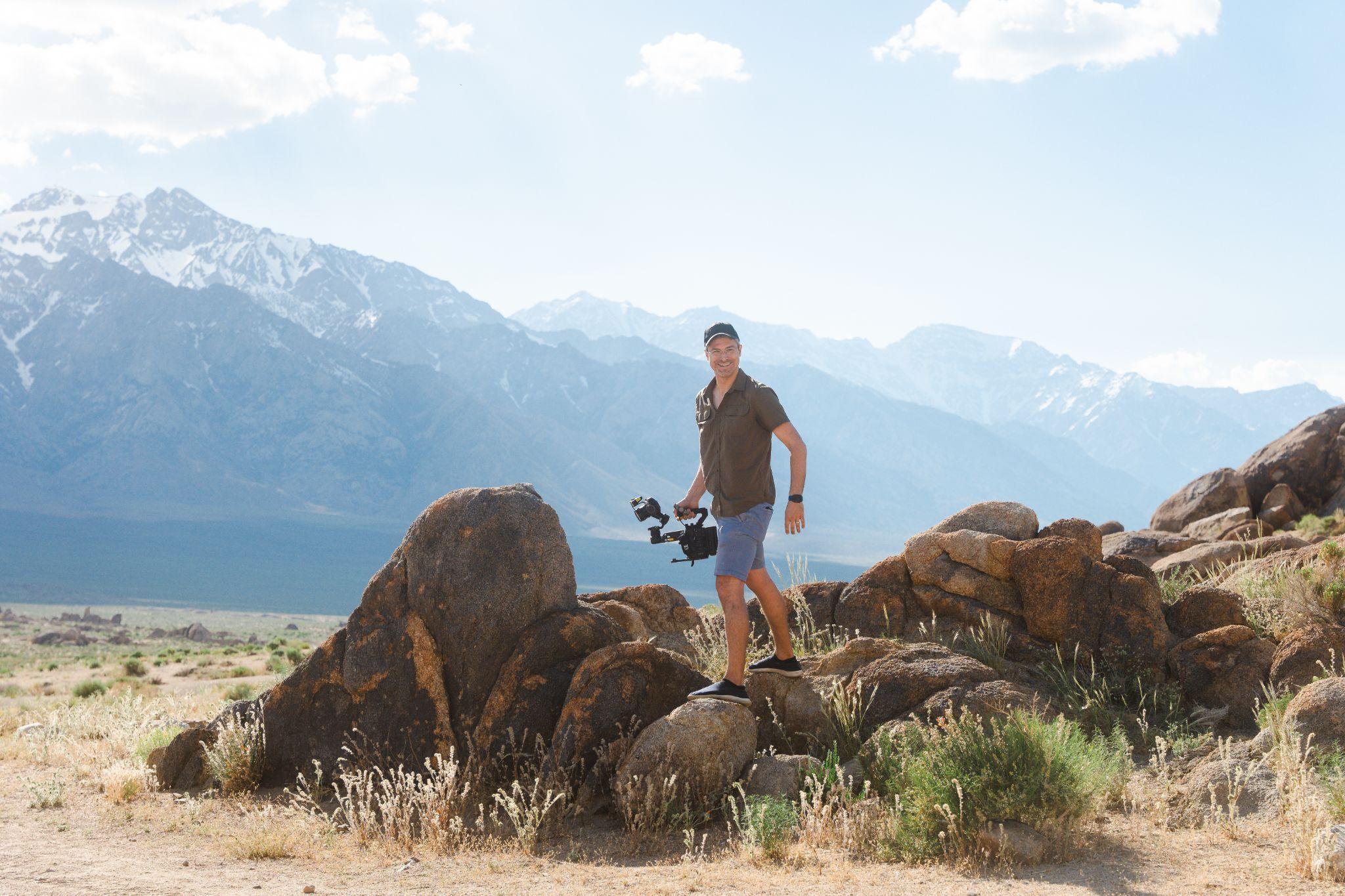
Lately, however, I’ve felt the boost to creativity that comes with smaller camera packages as manufacturers build camera platforms like the under-a-pound extraordinary SIGMA full-frame mirrorless fp camera, capable of CineDNG 12-bit. For Nick News, I was operating with a small crew in a humid jungle environment near a recently active volcano with the help of a camera platform I was new to – the Ronin 4D from DJI. While capable of filming robust internal Apple Pro Res files and giving a rare 4th axis of stabilization, the Ronin 4D is limited by available optics and that limit derives primarily from the need for very lightweight lenses.
Big lenses just do not mix with the 4th axis hardware on the 4D, but thankfully, you can adapt Sony E-mount, L-Mount, Leica M, PL, and DJI’s own DL-mount optics to the 4D.

SIGMA, from my admittedly biased perspective as a SIGMA Ambassador, is my go-to for E-mount and L-Mount optics, especially. Impressive that the SIGMA 35mm F2 DG DN | Contemporary lens weighs in at just 11.5 oz. (326g). Almost all of the other Contemporary lenses for mirrorless are similarly low-weight and thus compatible with the unique Ronin 4D camera.
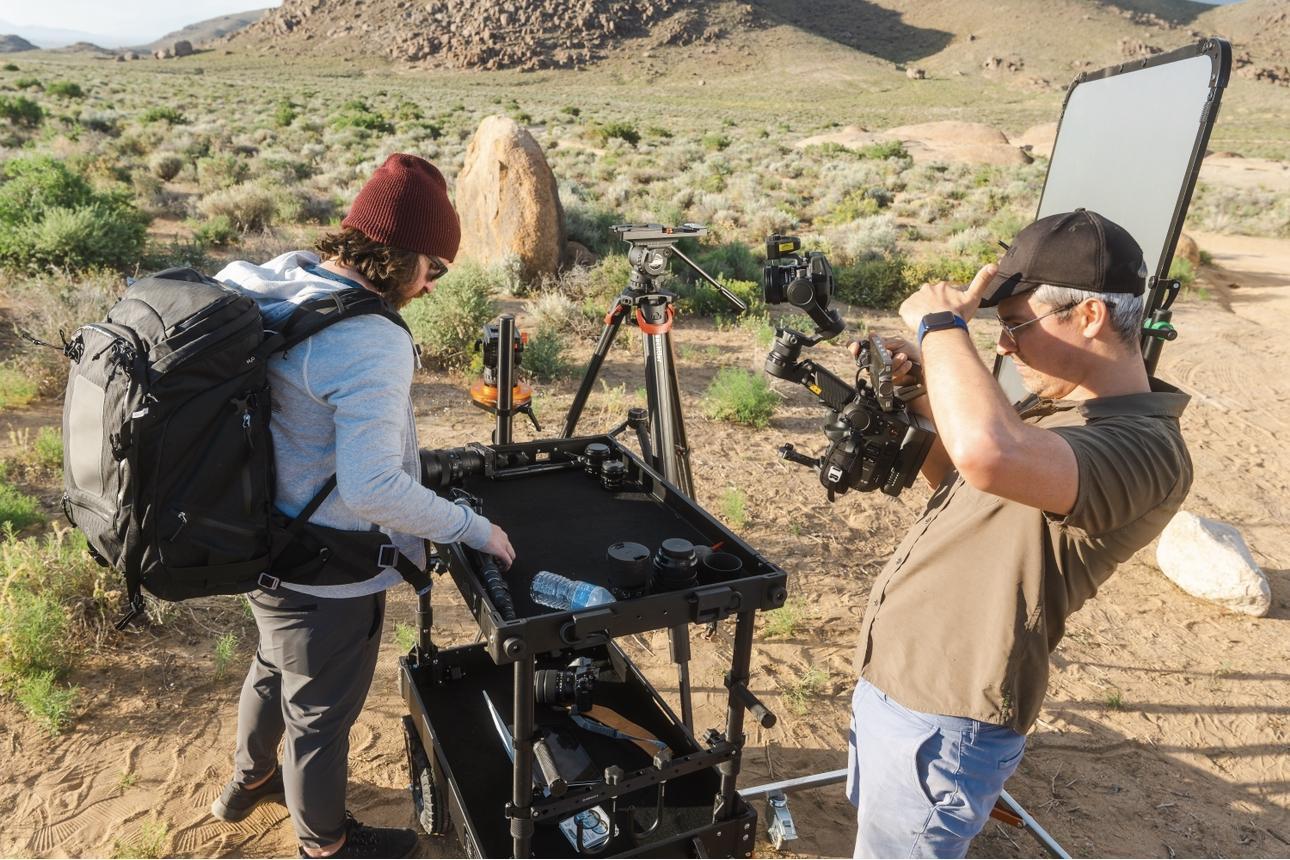
DJI has noticed the effectiveness of the Contemporary line, too, and many SIGMA lenses make DJI’s own compatibility list, but I want to point out that I’ve found others that work fine with the 4D that haven’t made that list yet.

The affordable Contemporary line offers a huge range of options for full-frame cameras, APS-C, and even some DSLR lenses that are still extremely popular. For me, the I series stands out as the perfect prime lenses to pair with the Ronin 4D, ranging from 17mm to 90mm at speeds from F2 to F4. For faster, weather-sealed autofocus glass, the Art line is the way to go, and many of those lenses, such as the 24mm F1.4 DG DN | Art, are surprisingly lightweight as well.
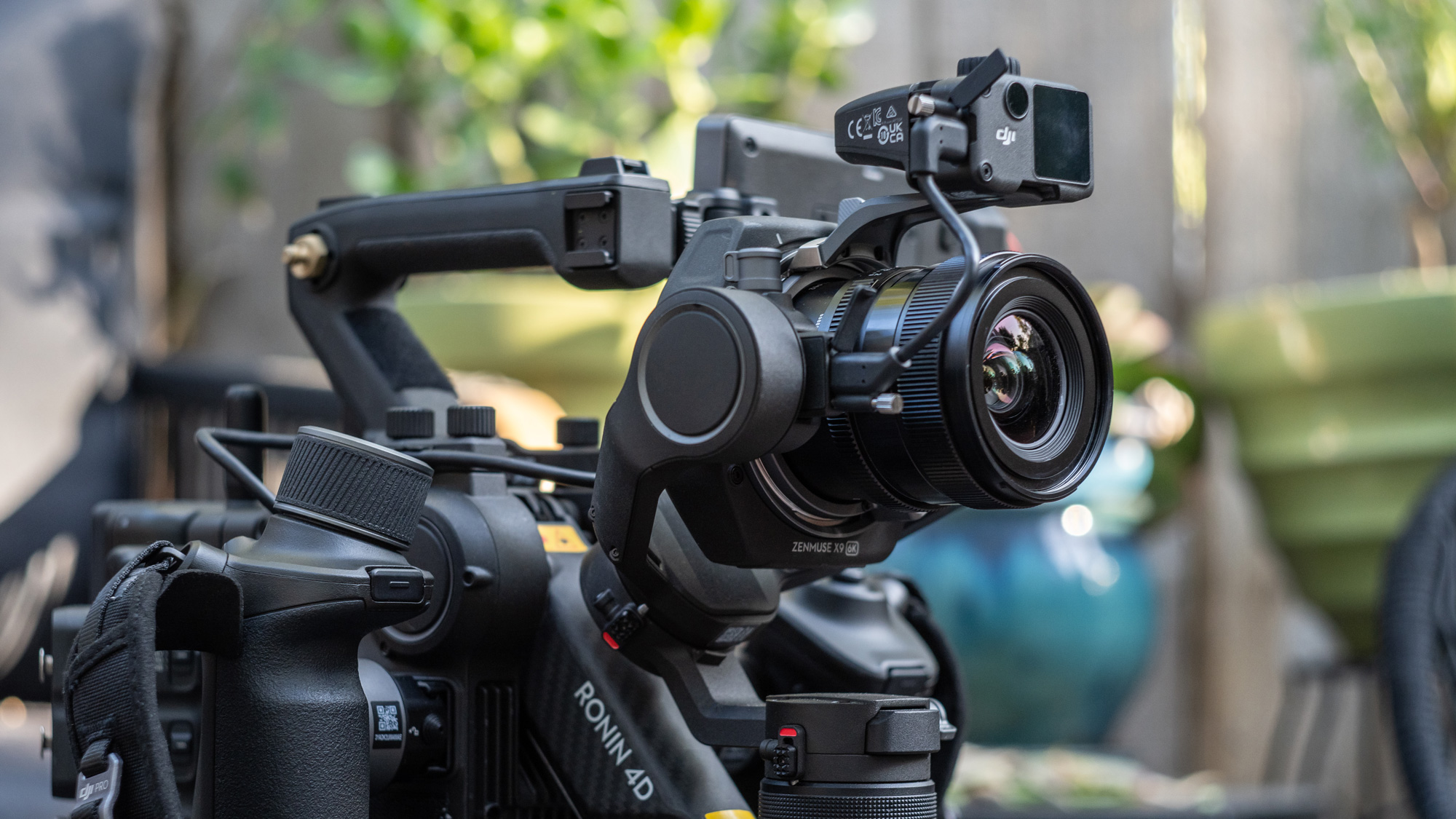
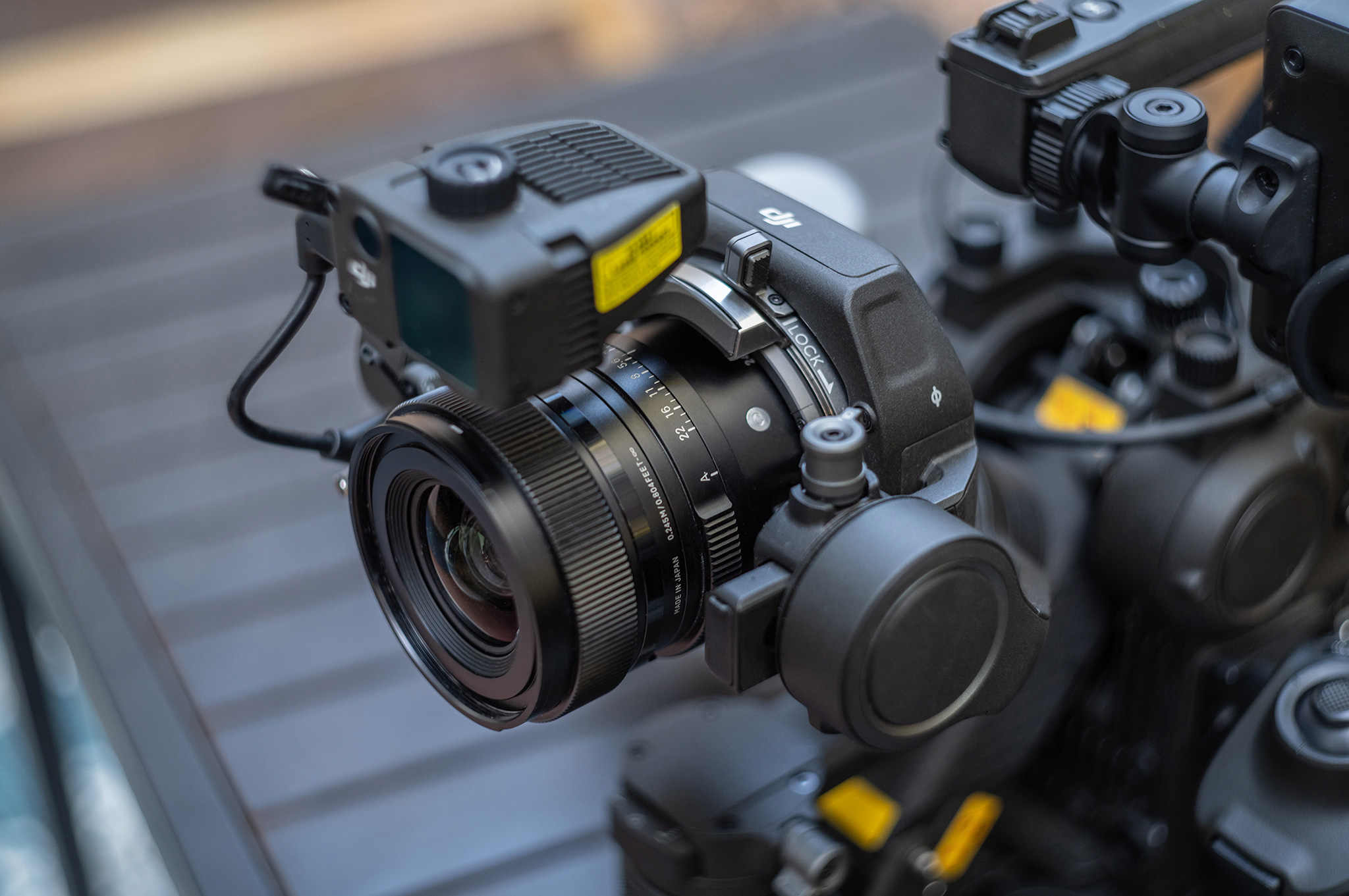
I have found that the LIDAR autofocus performance of the Ronin 4D pairs incredibly well with the Contemporary primes in smart mode and in the zone selectable modes, too. Given the weight of these prime lenses, you also don’t need to rely on the pricey DJI counterweight accessory to balance correctly. All of these facts align to make the Ronin 4D and SIGMA Contemporary line my absolute favorite gimbal experience to date (gimbals having a historical tendency to fall out of balance at the most inopportune times).
Let’s be clear that with SIGMA’s recent adoption of Fujifilm X Mount alongside Sony E and L-Mount systems, these optics are also excellent in a non-gimbal setting as well on your favorite mirrorless camera platform. The Ronin 4D has been slowly and steadily adopted on larger projects such as my Nickelodeon work and by Pete Rowe on his latest projects. A quick Google search brings up other shows as well.
Affordably priced, the sharp, small, and versatile Contemporary line is absolutely ready for prime time as another excellent tool alongside my favorite SIGMA Cine Primes.
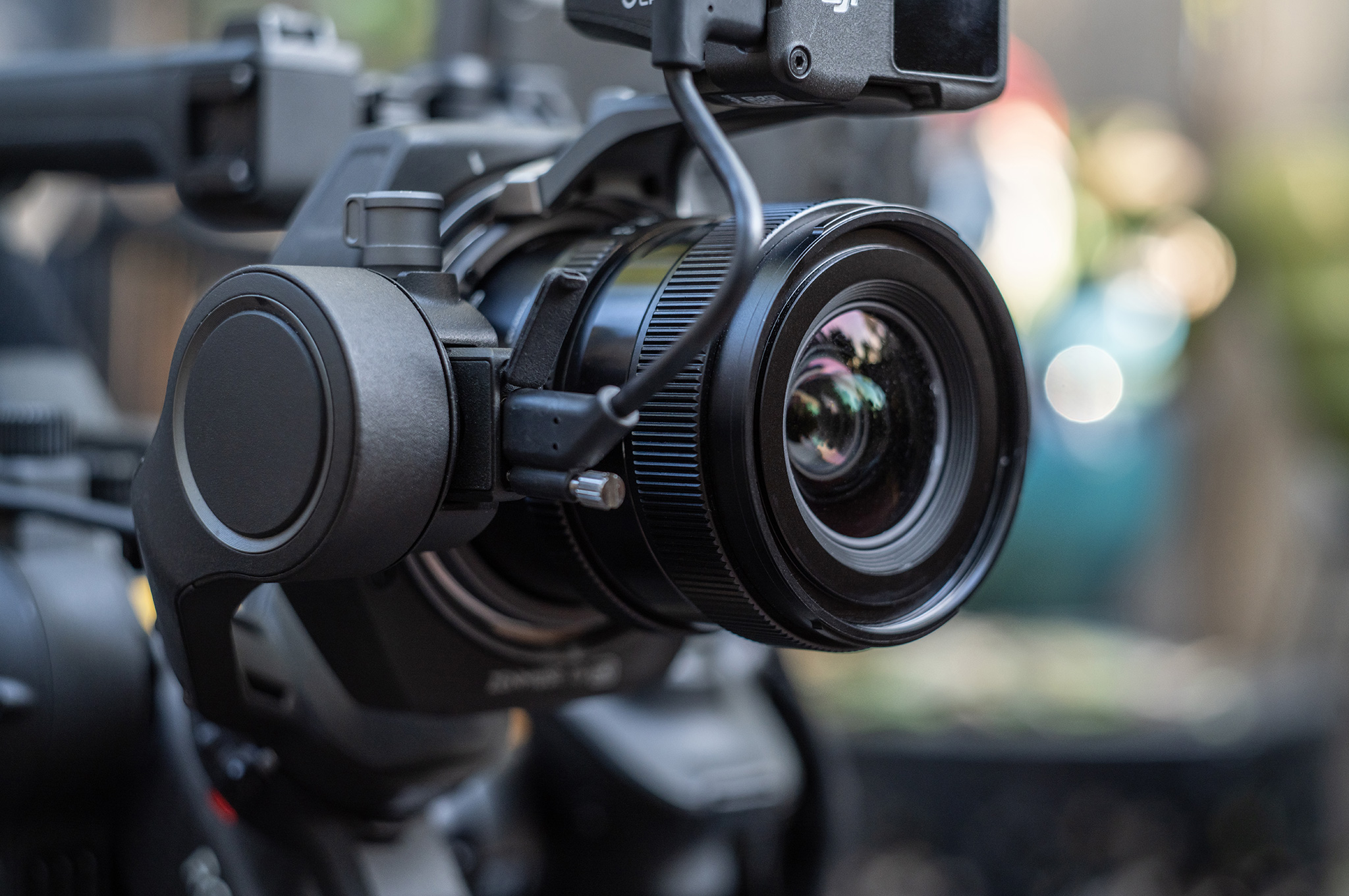
Browse SIGMA Contemporary lenses

